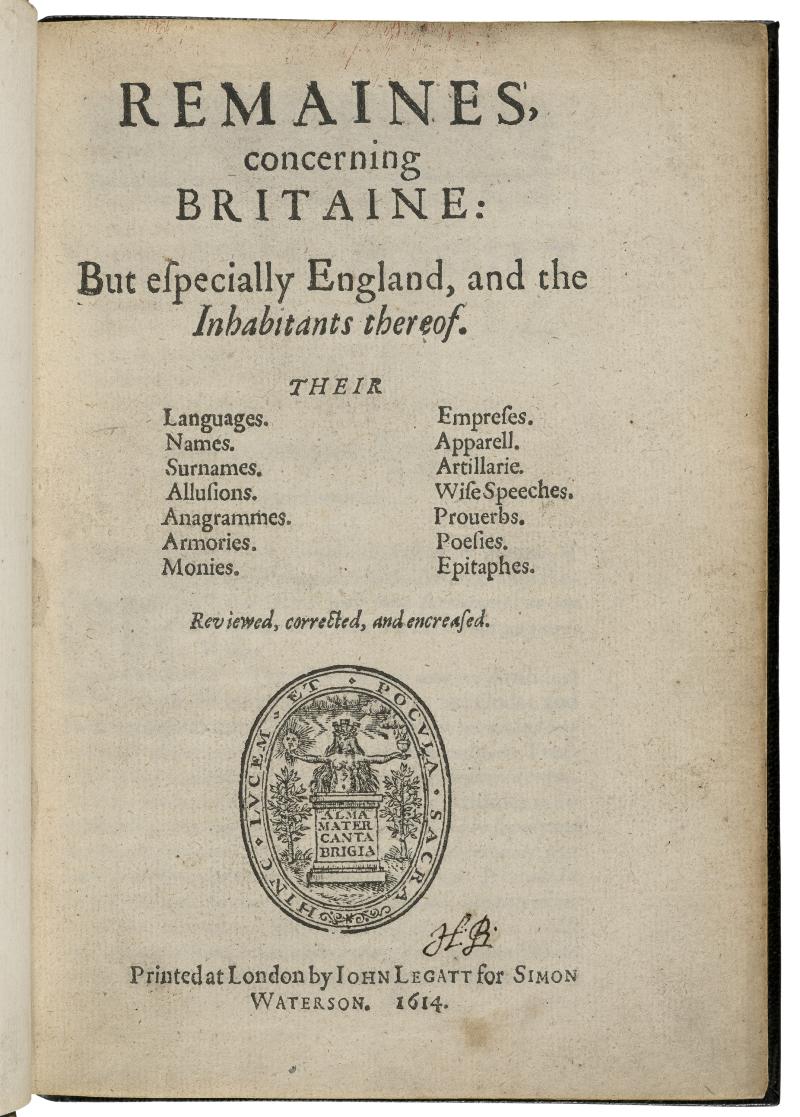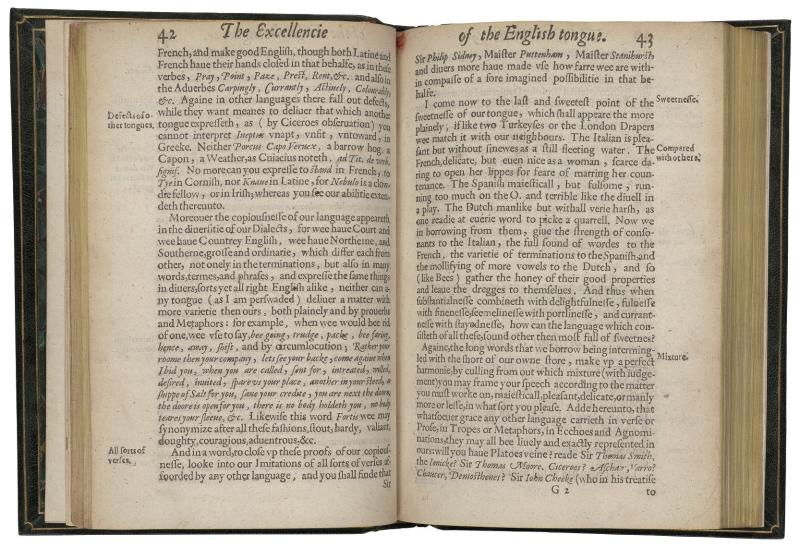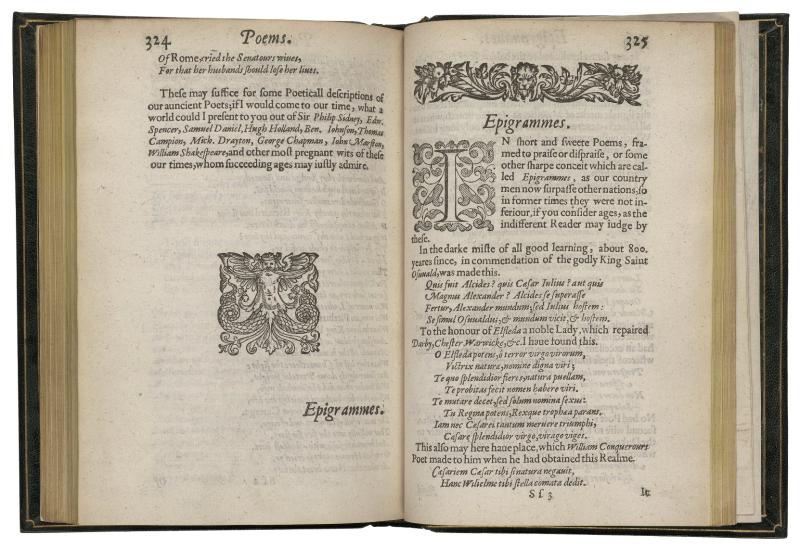Terms of use
Images that are under Folger copyright are licensed under a Creative Commons Attribution-ShareAlike 4.0 International License. This allows you to use our images without additional permission provided that you cite the Folger Shakespeare Library as the source and you license anything you create using the images under the same or equivalent license. For more information, including permissions beyond the scope of this license, see Permissions. The Folger waives permission fees for non-commercial publication by registered non-profits, including university presses, regardless of the license they use. For images copyrighted by an entity other than the Folger, please contact the copyright holder for permission information.
Copy-specific information
Creator: William Camden
Title: Remaines, concerning Britaine: but especially England, and the inhabitants thereof. Their languages. Names. Surnames. Allusions. Anagrammes. Armories. Monies. Empreses. Apparell. Artillarie. Wise speeches. Prouerbs. Poesies. Epitaphes. Reviewed, corrected, and encreased.
Date: Printed at London : By Iohn Legatt for Simon Waterson, 1614.
Repository: Folger Shakespeare Library, Washington, DC, USA
Call number and opening: STC 4522 copy 2, title page, sigs. G1v-G3r (pgs. 42-45) & Ss2v-SS3r (pgs. 324-325)
View online bibliographic record
Alan H. Nelson, "Remaines of a greater worke: Camden praises Shakespeare and includes Carew’s 'The excellencie of the English tongue'," Shakespeare Documented, https://doi.org/10.37078/711.
Folger Shakespeare Library, STC 4522 copy 2. See Shakespeare Documented, https://doi.org/10.37078/711.
William Camden, one of England’s most respected antiquaries, published the second edition of Remaines of a greater work in 1614. Like the first edition of 1605 it includes a list of living and recently deceased poets, ending with William Shakespeare (shown above on page 324).
The 1614 edition is the first to include Richard Carew’s essay “The excellencie of the English tongue,” which also celebrates English poets, including Christopher Marlowe and William “Shakespheare,” who are described as equals to the Roman poet Catullus. All subsequent 17th century imprints (1623, 1629, 1636, 1637, 1657, 1674) include Carew’s essay. Carew’s essay also survives in manuscript. Whether by ignorance or by a mistake of copying, Marlowe is given in both the manuscript, in the 1614 imprint (page 44 above) and all later 17th-century impressions as “Barlowe,” while Hero and Leander is called, simply, “Barlows fragment.” “Shakespheare” falls well within the range of contemporary spelling variants, and appears in all impressions except for 1629, where it is spelled "Shakespeare," and in 1674, where it is spelled "Shakesphear."
Written by Alan H. Nelson
Last updated January 25, 2020















